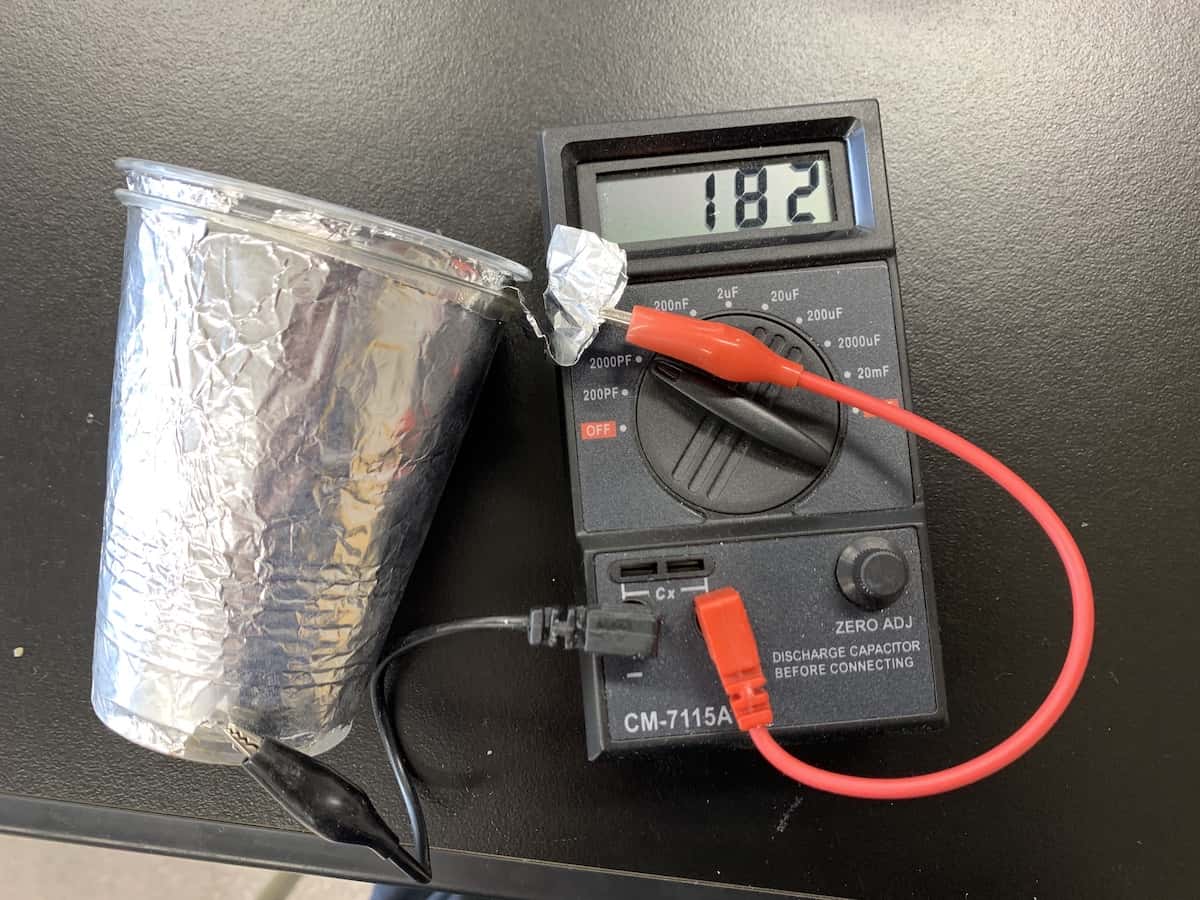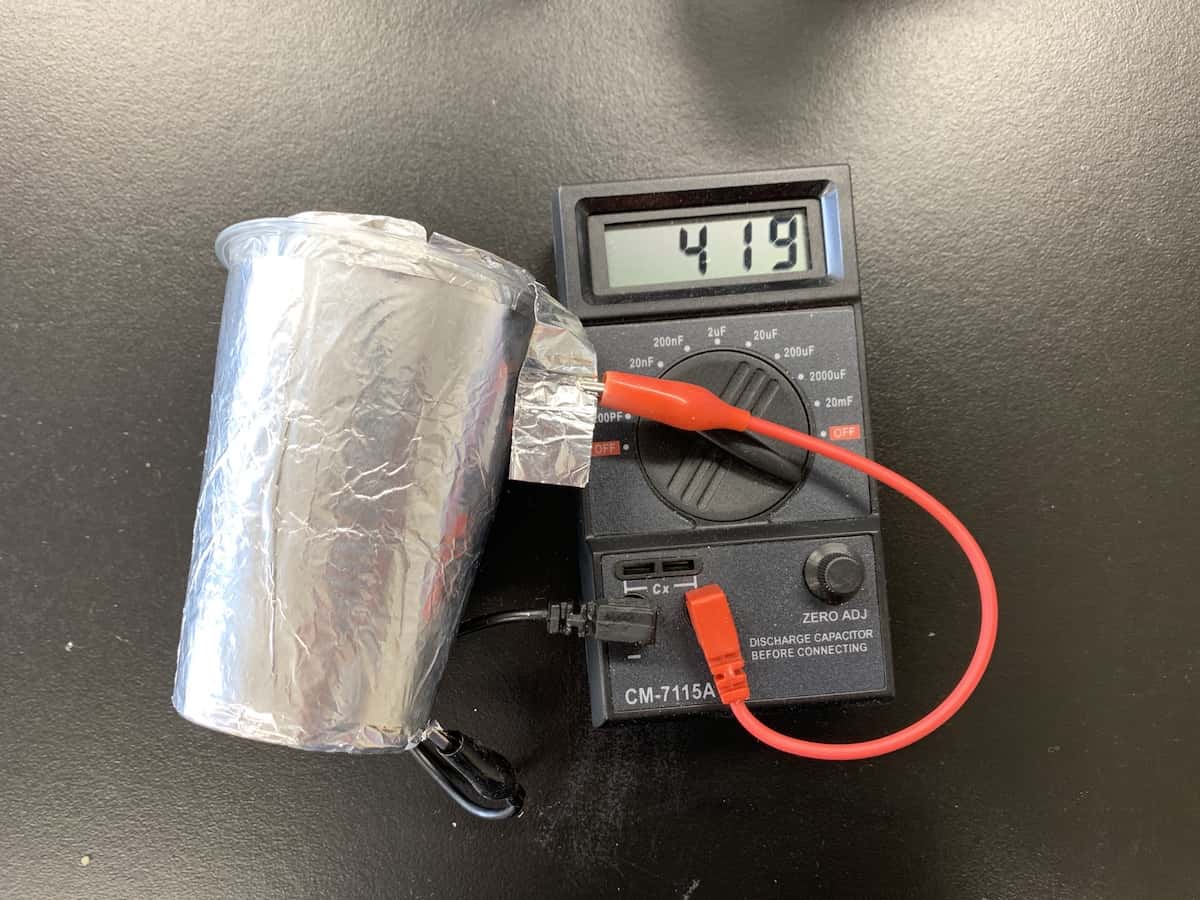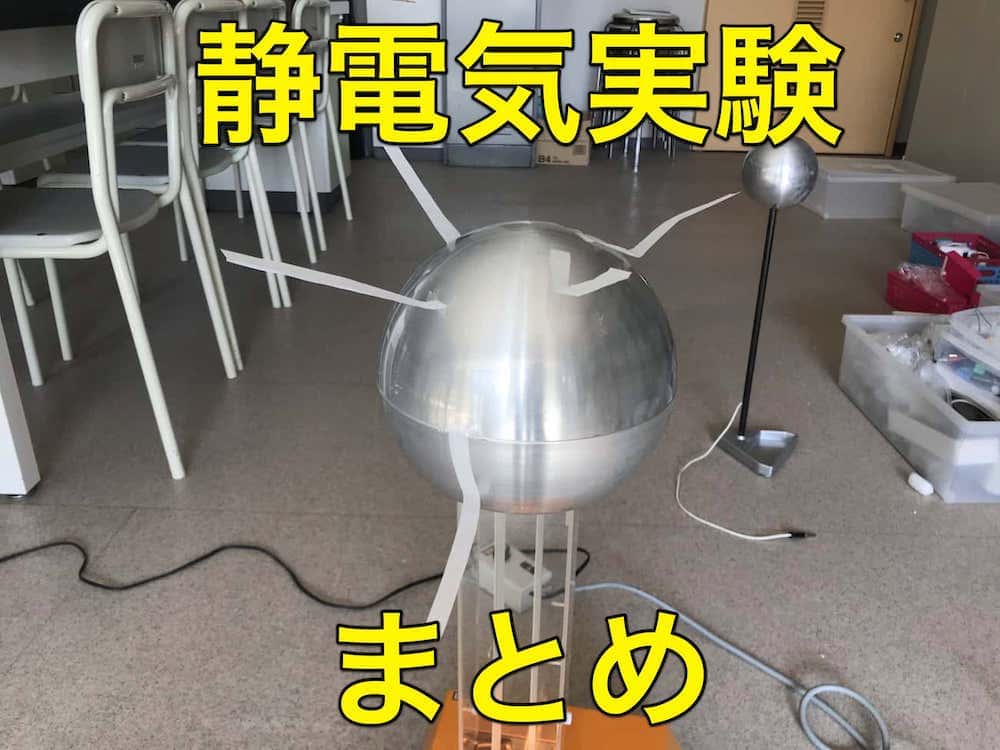ZAP! Can You Catch Static? Measuring the Power of a Homemade Leyden Jar
I’m Ken Kuwako, your Science Trainer. Every day is an experiment!
Measuring the Capacitance of a Homemade #LeydenJar from a Plastic Cup“ZAP!” You know that sharp sting that jolts your finger when you touch a doorknob on a dry winter day? That’s static electricity. What if we could trap that fleeting “ZAP!” in a jar and save it for later?That seemingly magical device, invented over 250 years ago, is called the Leyden Jar. For this experiment, we made a simple version using a plastic cup and aluminum foil. We seriously set out to find two things: just how much static electricity can this jar hold, and is it safe to touch the stored charge? Here are the “capacitance” and “energy” measurements!1 Comparing the Old Leyden JarFirst up is an old Leyden Jar I made a few years ago. You can tell just by looking at it that it’s a little worn out; the aluminum foil is a bit frayed. It shows its age! We measured the “capacitance” of this old jar. Capacitance is a number that tells you the “size of the container”—how much electrical charge it can store.The measurement result was… 182 pF (picofarads). 2 What’s the Power of the Sparkling New Leyden Jar?Next, let’s look at the shiny, new Leyden Jar! It’s about the same size as the old one. So, what were the results?The capacitance was an incredible 419 pF! That’s more than double the reading of the old jar!
2 What’s the Power of the Sparkling New Leyden Jar?Next, let’s look at the shiny, new Leyden Jar! It’s about the same size as the old one. So, what were the results?The capacitance was an incredible 419 pF! That’s more than double the reading of the old jar! Why such a huge difference, even though the materials and size are nearly the same? The Leyden Jar’s performance is determined by how “close” and how “widely” the inner and outer aluminum foils face each other, with the plastic cup (insulator) sandwiched between them. Most likely, the foil in the old jar was loose or wrinkled, making it less efficient. It seems that the care taken in applying the aluminum foil and the condition of the cup’s surface greatly impact the performance. That’s the fun part of building things!Calculating the Power of the “ZAP!”: How Much Energy is Stored?The voltage of static electricity can sometimes reach 10,000 volts (V)! That’s an astonishingly high voltage compared to the 100V from a household outlet. (However, the current that flows is extremely small, so it discharges almost instantly.)Using this voltage and the measured “capacitance” (pF), we calculated how much electrical energy (J: Joules) can be stored in the Leyden Jar.(Formula: Energy (J) = 1/2 × Capacitance (F) × Voltage (V)²)Old Leyden Jar
Why such a huge difference, even though the materials and size are nearly the same? The Leyden Jar’s performance is determined by how “close” and how “widely” the inner and outer aluminum foils face each other, with the plastic cup (insulator) sandwiched between them. Most likely, the foil in the old jar was loose or wrinkled, making it less efficient. It seems that the care taken in applying the aluminum foil and the condition of the cup’s surface greatly impact the performance. That’s the fun part of building things!Calculating the Power of the “ZAP!”: How Much Energy is Stored?The voltage of static electricity can sometimes reach 10,000 volts (V)! That’s an astonishingly high voltage compared to the 100V from a household outlet. (However, the current that flows is extremely small, so it discharges almost instantly.)Using this voltage and the measured “capacitance” (pF), we calculated how much electrical energy (J: Joules) can be stored in the Leyden Jar.(Formula: Energy (J) = 1/2 × Capacitance (F) × Voltage (V)²)Old Leyden Jar

→ Approximately 9 mJ (millijoules)
New Leyden Jar

→ Approximately 20 mJ (millijoules)
As expected, the new, carefully made Leyden Jar can store more than double the energy of the old one!【IMPORTANT】 Is “20 mJ” a Safe Amount of Energy?Our calculations show that a maximum of 20 mJ of energy can be stored. So, is this “20 mJ” level safe to experience in an experiment?It turns out that the safe static energy limit for a “fun experiment that doesn’t go wrong” is generally considered to be around 20 mJ (Ref. 1). This means that both the old and new Leyden Jars have just the right amount of energy for a safe and exciting experiment! You’ll be surprised by the “ZAP!”, but you can enjoy it safely.
Taking the condition “2 mA for about 1 second from commercial AC is absolutely safe” as a benchmark, and finding the educational energy limit for a pulsed electric shock:
Assuming the resistance of the human body is $5 k\Omega$:$$W = Pt = (2 \times 10^{-3})^2 \times 5000 = 0.02 J = 20 mJ$$
(Left-Maki Takeo, Takikawa Yoji, Dictionary of Fun Physics Experiments (Tokyo Shoseki, 1988))
(As the citation suggests, this 20 mJ value is calculated based on 2 mA (milliamperes), which is considered absolutely safe, only causing a slight prickling sensation when flowing through the human body.)However, how people experience the current (“prickling” vs. “painful!”) varies between adults and children, boys and girls, and is also greatly influenced by the day’s conditions, like humidity. It’s crucial to always conduct these experiments under the supervision of a knowledgeable adult or teacher, and to confirm the safe levels before proceeding.
(Based on Tanaka Ryuji & Ichikawa Kenji, RIIS-SD-70-1 Safety Data from the Research Institute of Industrial Safety (Ministry of Labour’s Industrial Safety Institute)) (Ref. 1)
 When doing experiments that involve an #ElectricShockExperience, in addition to precautions like excluding students with pacemakers or existing injuries, it’s also important to pay close attention to the capacitance.Get Ready for Awesome Experiments with a Van de Graaff Generator!While a homemade Leyden Jar is fun, you can do even more amazing experiments using a Van de Graaff generator, a device that safely generates more powerful static electricity!I’ve shared some interesting experiments using the Van de Graaff, including ones performed on TV shows with celebrities like Suzu Hirose, Ryohei Suzuki, Yasuko, and Chocolate Planet’s Osada and Matsuo. Find out more here.
When doing experiments that involve an #ElectricShockExperience, in addition to precautions like excluding students with pacemakers or existing injuries, it’s also important to pay close attention to the capacitance.Get Ready for Awesome Experiments with a Van de Graaff Generator!While a homemade Leyden Jar is fun, you can do even more amazing experiments using a Van de Graaff generator, a device that safely generates more powerful static electricity!I’ve shared some interesting experiments using the Van de Graaff, including ones performed on TV shows with celebrities like Suzu Hirose, Ryohei Suzuki, Yasuko, and Chocolate Planet’s Osada and Matsuo. Find out more here. ※ Please note that experiments using a static electricity generator (Van de Graaff) must always be conducted with an expert present. Please proceed with caution. Also, for requests related to static electricity experiments (workshops, TV consulting/appearances, etc.), please contact us here.
※ Please note that experiments using a static electricity generator (Van de Graaff) must always be conducted with an expert present. Please proceed with caution. Also, for requests related to static electricity experiments (workshops, TV consulting/appearances, etc.), please contact us here.
【Feature Article】You Won’t Be Able to Stop! Static Electricity Experiments
 Contact and RequestsBringing the wonder and fun of science closer to you! I’ve put together easy-to-understand tips and fun science experiments you can do at home. Feel free to browse around!The content of the Science Notebook has been published as a book. Click here for details.More about the site administrator, Ken Kuwako: Click hereFor all requests (writing, lectures, workshops, TV consulting/appearances, etc.): Click here* Updates are streamed on X!
Contact and RequestsBringing the wonder and fun of science closer to you! I’ve put together easy-to-understand tips and fun science experiments you can do at home. Feel free to browse around!The content of the Science Notebook has been published as a book. Click here for details.More about the site administrator, Ken Kuwako: Click hereFor all requests (writing, lectures, workshops, TV consulting/appearances, etc.): Click here* Updates are streamed on X!
![]() Experimental videos are being streamed on the Science Note Channel!
Experimental videos are being streamed on the Science Note Channel!


